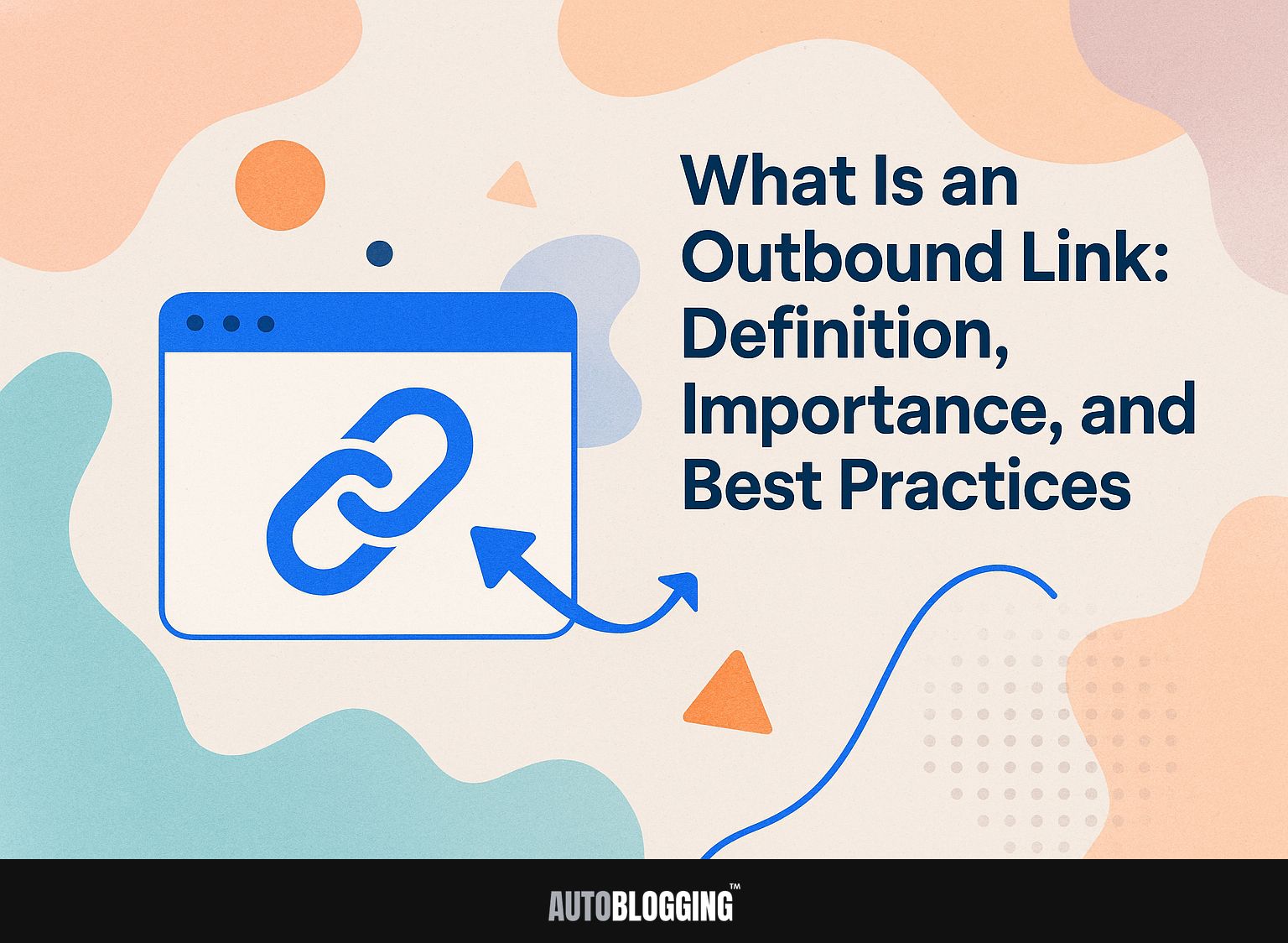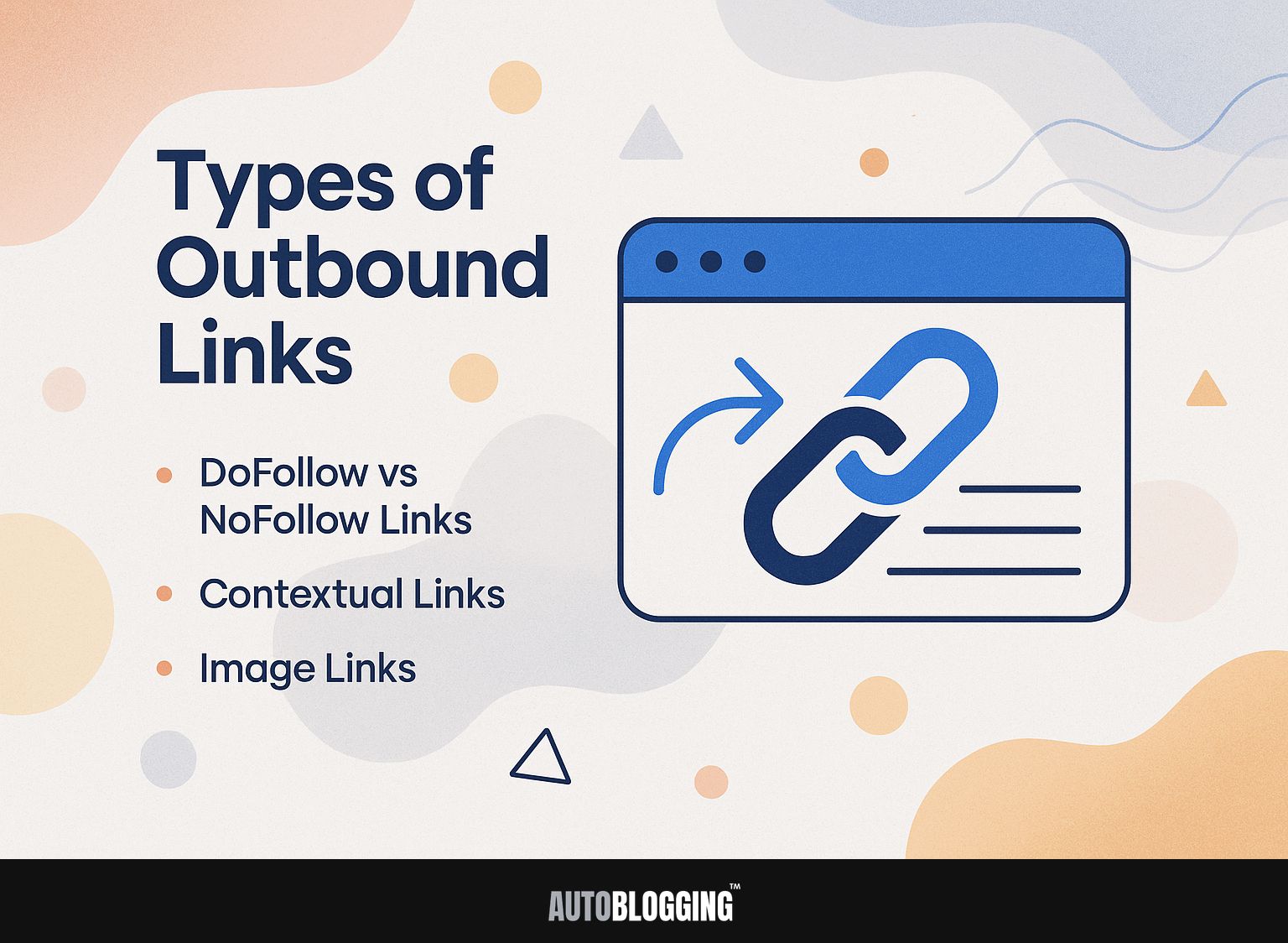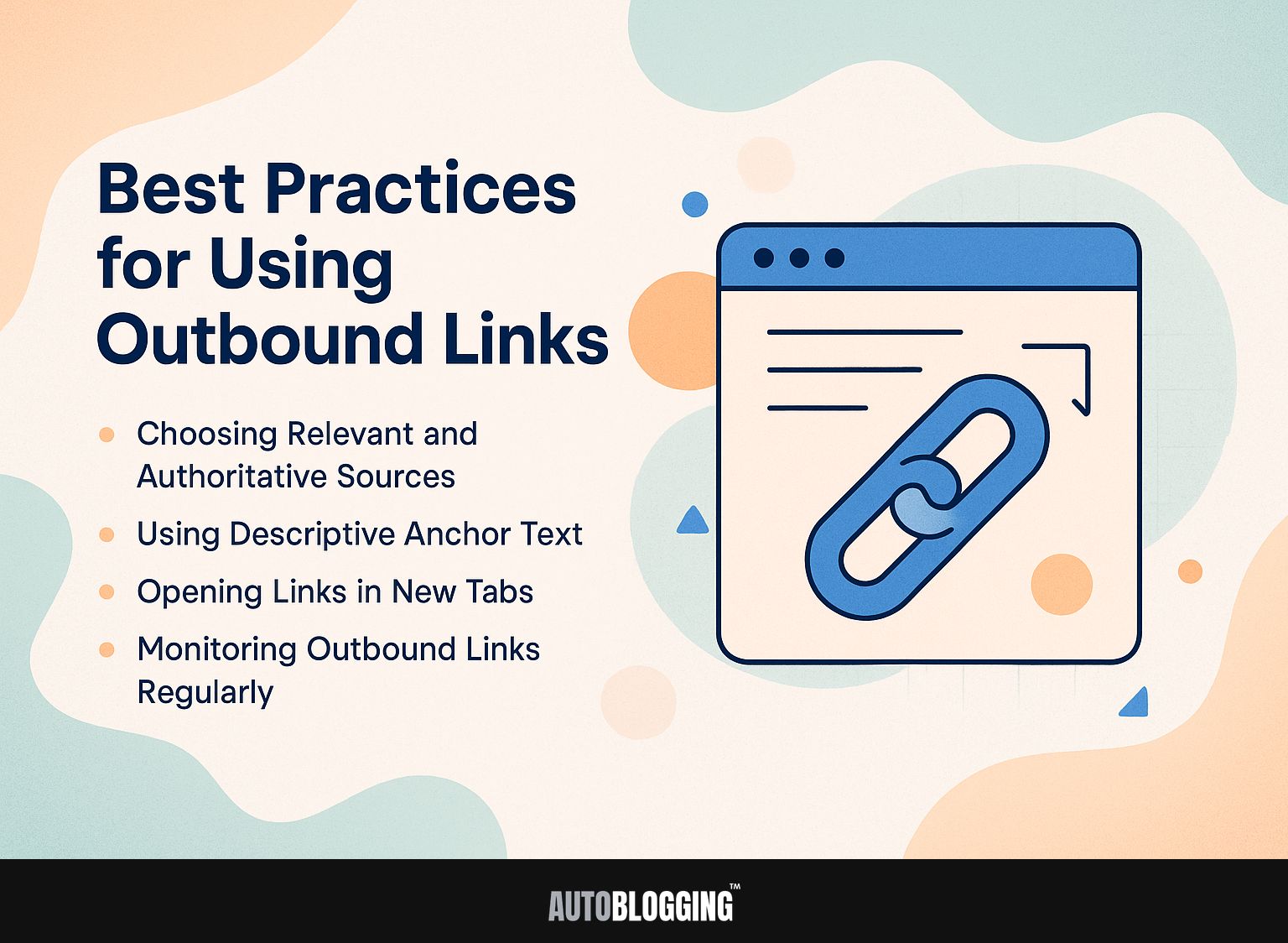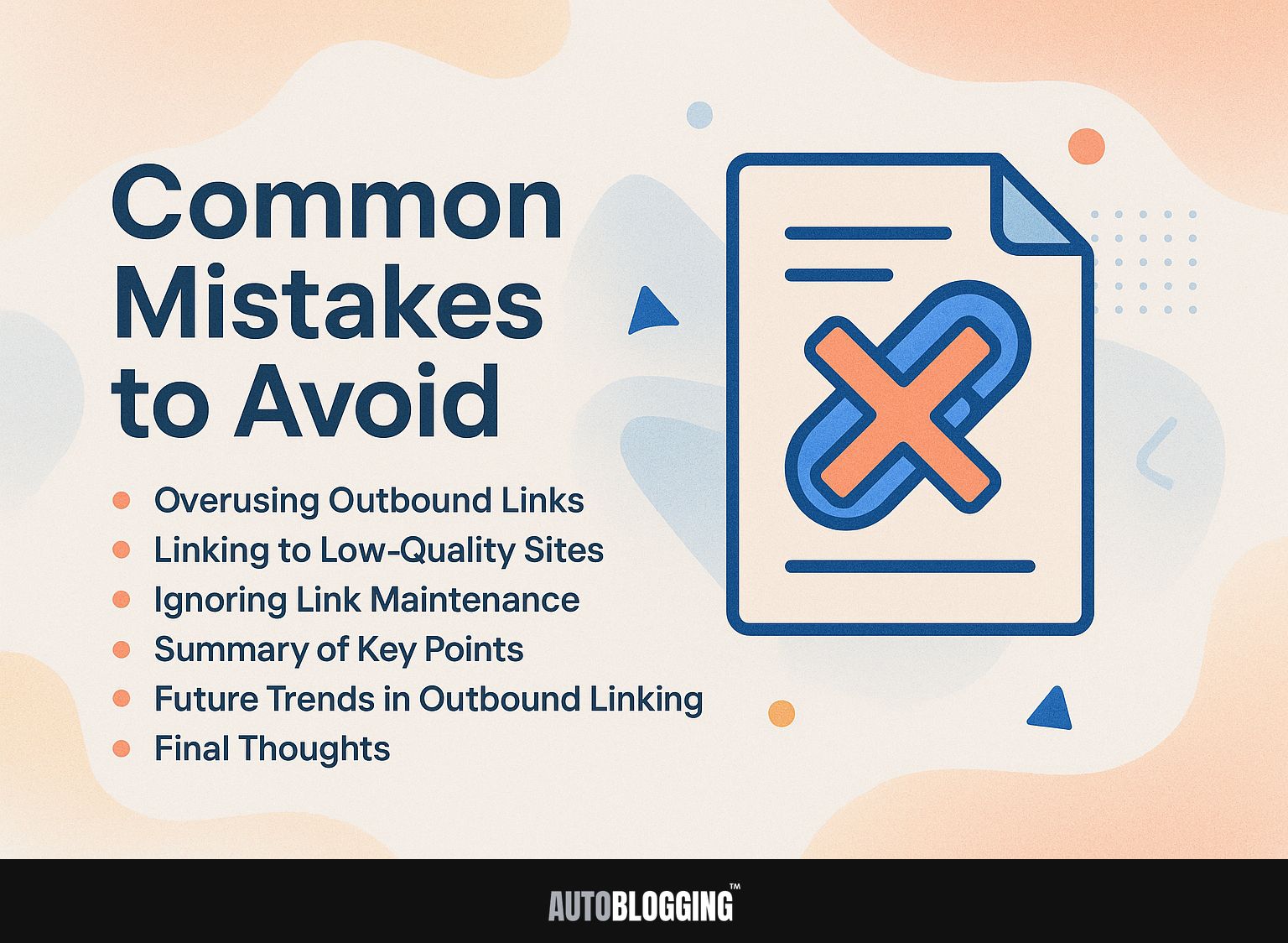
Outbound links are important for SEO. They improve your website’s trustworthiness and help build strong links. By connecting to reliable sources, you improve your rankings on Google and Bing and follow Yoast SEO best practices. In this article, we’ll explain what outbound links are, discuss why they matter, and provide tips on how to make them work best for you. Learn how to use outbound links to improve your SEO and make your website more user-friendly!
Key Takeaways:
- Outbound links are hyperlinks that direct users to external websites, providing additional information and resources.
- They are important for building trust, boosting search engine rankings, offering useful information to readers, and promoting the creation of backlinks.
- Different types of outbound links are DoFollow, NoFollow, related content links, and image links.
- The best practices for using outbound links include choosing relevant and authoritative sources, using descriptive anchor text, and regularly monitoring links.
- Common mistakes to avoid include overusing links, linking to low-quality sites, and ignoring link maintenance.
- Choosing and managing outbound links on your website is important for getting good results.
Contents
1. Definition of Outbound Links
Outbound links are hyperlinks that direct users from your website to another domain, which can significantly impact your site’s SEO and credibility. These links serve multiple purposes, including enhancing the user experience and improving search rankings.
For example, linking to reputable sites like the Content Marketing Institute gives readers useful information, demonstrating that you focus on dependable sources.
Search engines consider links to other websites as signs of good content. Linking to well-respected sites can make your site seem more reliable. Implementing a strategy of linking to reputable external sources within your articles can strengthen your content’s overall impact.
2. Difference Between Outbound and Internal Links
While internal links connect different pages within your own site, outbound links lead users to external resources, each serving distinct purposes for user experience and SEO.
Outbound links are important for building trust and offering extra information to your readers. For example, including links to respected sources like industry research or related articles can make the content more reliable and attract user interest.
To use outbound links well, pick reliable sources that go well with your content. Tools like Ahrefs or Moz can help you identify reputable sites.
Make links open in a new tab so users stay on your site while they check out the referenced materials. This balance helps improve user experience and can improve your SEO rankings.
Importance of Outbound Links
Adding links to other websites makes the content better, helps with search engine rankings, and provides a trustworthy experience for users.

1. Enhancing Credibility and Trust
Including links to trusted sources like the [American Heart Association](https://www.heart.org) can make your content more credible. This approach increases user trust and can lead to better engagement numbers.
For instance, a health blog saw a 25% increase in user engagement within three months of integrating links to well-respected medical journals and organizations.
To get similar outcomes, find trusted sources related to your topic, use tools such as Ahrefs to check their reliability, and include these links naturally in your content.
This method assists readers in locating additional details, establishing your site as a reliable source, and attracting a dedicated group of readers.
2. Improving SEO Performance
Links going out from your website help build a strong collection of backlinks, which is important for better search engine results.
According to Moz, websites that include a variety of outbound links can greatly improve their domain authority.
Specifically, linking to high-quality sources such as authoritative industry research or reputable news articles signals to search engines that your site is a hub of quality information. For example, including references from well-known sources increases credibility, which makes search engines more likely to trust the content.
Regularly review your outbound links to confirm they are relevant and reliable. This improves search engine results and makes it better for users.
3. Providing Value to Readers
By giving readers links to more resources, you improve their experience and make your site a good source of information.
Outbound links help readers learn more about topics by giving additional information and improving comprehension. For example, if writing about SEO strategies, linking to authoritative resources like the Moz Beginner’s Guide to SEO can clarify complex concepts.
To manage these links effectively, tools like Yoast SEO can help you implement best practices, ensuring they are relevant and beneficial. Consider using proper anchor text for clarity-linking ‘SEO best practices’ directly to a guide is much clearer than simply using ‘click here.’ This thoughtful linking strategy improves user experience and credibility.
4. Encouraging Link Building
Placing outbound links thoughtfully can lead to building mutual links and relationships with other content creators.
For example, a lifestyle blog partnered with a local fitness influencer. By sharing links to each other’s content, they increased their website visitors by 30% in a month.
To implement this, identify complementary content creators in your niche, then propose a mutual linking arrangement.
Use tools like Ahrefs or SEMrush to study the domains they link to and contact them with custom emails. Show how your partnership benefits both groups-this practical method improves SEO and builds stronger community connections.
Types of Outbound Links
Knowing about different kinds of outbound links is important for managing and improving link strategies.

1. DoFollow vs NoFollow Links
DoFollow links pass on SEO value, while NoFollow links signal to search engines not to count the link towards link equity.
Knowing when to use each type is key for successful link-building strategies. DoFollow links are beneficial for improving your site’s domain authority, as they pass link equity from one site to another. For example, writing posts for well-known websites can result in useful DoFollow links.
In contrast, NoFollow links are often found in social media, forum comments, or sponsored content. Although they don’t improve link authority, they can increase visitors to your site and raise awareness of your brand.
Utilizing both types strategically-focusing on DoFollow links for SEO and NoFollow links for engagement-creates a balanced approach.
2. Contextual Links
Links that are part of the content give direct relevance and help the reader grasp the topic better.
Putting related links into practice well requires following some helpful guidelines.
- First, make sure the linked content is truly helpful; this builds reader trust and attention.
- Second, use descriptive anchor text that clearly indicates what readers can expect upon clicking. For example, instead of “click here,” use “learn more about SEO best practices.”
Metrics indicate that links related to the content can increase click-through rates by 30% compared to regular links. This occurs because they blend smoothly with the story, so they feel more genuine and less jarring.
3. Image Links
Clickable pictures can help users interact more and guide them to useful external resources. To use image links well, make sure each image includes detailed alt text that explains what it is about or its purpose. This greatly aids in SEO by providing context to search engines.
For linking strategies, consider directing users to a relevant blog post, product page, or resource that complements the image content. Also, reduce the image file size for quicker loading times, as page speed is important for user experience.
Tools like TinyPNG or ImageOptim can help with compression, ensuring high-quality visuals without compromising performance.
Best Practices for Using Outbound Links
Using effective strategies for outbound links can greatly improve both how users interact with your site and your SEO results.

1. Choosing Relevant and Authoritative Sources
Selecting reputable sources for outbound links is essential to maintaining site credibility and enhancing trustworthiness.
To evaluate sources for relevance and authority, consider these criteria:
- Look for established sites in your niche.
- Check domain authority using tools like Moz or Ahrefs.
- Review authors’ credentials.
For example, linking to well-known sources like Harvard Business Review or Forbes increases credibility and associates your content with reliable information. Academic journals or recognized trade publications can make your content more trustworthy.
By using reliable and suitable sources, you build trust with your audience and increase your site’s SEO results.
2. Using Descriptive Anchor Text
Using clear anchor text makes websites easier to use and shows users where a link will lead.
To create effective anchor text, follow these tips.
- First, use clear and specific words that describe the linked content accurately; for example, instead of saying “click here,” use “learn more about SEO techniques.”
- Second, keep it concise-aim for no more than 3-6 words.
Assess your anchor text against Yoast SEO’s analysis tool, which provides feedback on keyword usage and readability. By using these strategies, you can improve both user experience and search engine rankings.
3. Opening Links in New Tabs
Opening outbound links in new tabs lets readers check them out without leaving your site.
To implement this feature using HTML, simply add the target="_blank" attribute to your anchor tags.
For example, <a href="https://example.com" target="_blank">Visit Example</a> will make the link open in a new tab.
This small change can lead to increased user engagement, as studies show that users are more likely to stay on your page longer when they can easily return to it.
Consider using JavaScript or a jQuery snippet to add this attribute throughout the entire site, so you don’t have to write the same code repeatedly.
4. Monitoring Outbound Links Regularly
Regularly checking your outbound links makes sure they work and are up-to-date, which is important for keeping your site’s credibility. Link audits help identify broken links, which can harm both user experience and SEO rankings.
To check your website thoroughly, tools like Screaming Frog can scan it and find any broken links. As another option, Ahrefs looks at your backlink profile and offers ways to make it better.
Check your content every three months to keep it up-to-date and accurate. Having good outbound links builds your credibility and lets visitors check out your resources with trust.
Common Mistakes to Avoid
Steering clear of mistakes in linking to external sites can help preserve your website’s credibility and make it better for visitors.

1. Overusing Outbound Links
Excessive outbound links can overwhelm readers and dilute the content’s focus, negatively affecting user experience.
Managing outbound links is important for keeping both SEO effectiveness and reader interest. Research shows that pages with excessive outbound links can lead to a 30% drop in average time on page, as users may get distracted by too many external sites.
To maintain effectiveness, aim for 2-3 relevant outbound links per article. Use tools like Google Analytics to track how users interact, which helps see how outbound links affect the site’s performance. This approach promotes a better reader experience while reinforcing your content’s authority.
2. Linking to Low-Quality Sites
Linking to low-quality or irrelevant sites can damage your website’s authority, leading to a decrease in search engine rankings.
To avoid this, start by evaluating potential link sources. Use tools like Moz’s Link Explorer and Ahrefs to check a website’s Domain Authority (DA) and the links that lead to it. Focus on sites with a DA above 30 and relevant content.
Consider a checklist for site evaluation:
- Relevance to your niche;
- Update frequency;
- Trustworthiness or reviews;
- Traffic levels.
By using these methods, you can make sure your links help improve SEO, increasing your site’s trustworthiness.
3. Ignoring Link Maintenance
Neglecting link maintenance can lead to broken links, which detracts from user experience and can harm your site’s SEO.
To keep a good link profile, regularly check it using tools like Screaming Frog, Ahrefs, or SEMrush. These platforms let you find broken links so you can quickly update or delete them.
Set a schedule to review your links at least quarterly. Prioritize the most visited pages for audits, as they impact user experience the most.
By keeping solid links, you make it easier for users to move around your site and increase your visibility in search engines, helping more people find your content.
4. Summary of Key Points
This article has highlighted the essential roles that outbound links play in improving SEO, credibility, and user engagement.
To maximize the effectiveness of outbound links, focus on three key strategies.
- First, make sure links point to reputable, reliable sources to increase your site’s credibility. For instance, linking to well-known industry publications can improve your credibility.
- Second, regularly update your outbound links; broken links can harm both user experience and SEO rankings. Use tools like Screaming Frog to check websites.
- Context is essential-provide a brief explanation for each link, indicating its relevance, which encourages users to click and engage further with your content.
5. Future Trends in Outbound Linking
As SEO changes, the way we handle outbound links will change to focus on better user experience and making content more relevant.
Experts like John Mueller anticipate that search engines will increasingly prioritize sites that include relevant, high-quality outbound links. For example, linking to trustworthy sources increases your credibility and builds user trust.
Website owners should think about adding more links that genuinely help readers, like connections to related studies or expert articles. Using tools like Ahrefs or Moz can help identify high-quality links worth pursuing. This strategic approach is expected to improve both rankings and user engagement in the long run.
6. Final Thoughts
Implementing a thoughtful outbound linking strategy can serve as a cornerstone for enhancing your website’s authority and user experience.
To effectively implement this strategy, identify high-quality sources relevant to your content. For instance, if you run a health blog, link to reputable sites like Mayo Clinic or WHO.
Use tools like Ahrefs to analyze the authority of your chosen sites. Keep a balanced approach by using around 3-5 outbound links per post. This helps maintain reader concentration without causing confusion.
Regularly review your links, ensuring they remain relevant and functional. This active method will improve your site’s trustworthiness and persuade users to spend more time there.
Frequently Asked Questions
1. What is an Outbound Link?
An outbound link, also known as an external link, is a hyperlink on a webpage that leads to another website or webpage. It directs the user away from the current webpage and to a different destination.
2. What is the Definition of an Outbound Link?
The definition of an outbound link is a hyperlink on a webpage that points to another webpage or website. It is considered an outbound link because it leads the user away from the current webpage to a different destination.
3. Why is an Outbound Link Important?
An outbound link is important because it helps to connect your website or webpage to other relevant and credible sources. It also improves the overall user experience by providing additional information and resources for the reader.
4. What is the Importance of Outbound Links in SEO?
Outbound links are important for improving search engine rankings. They can help increase the visibility and credibility of your website, as well as improve your website’s ranking on search engine results pages.
5. What are the Best Practices for Using Outbound Links?
Some best practices for using outbound links include linking to relevant and authoritative sources, using descriptive anchor text, and ensuring that the links open in a new tab to keep your website open for the user.
6. How Many Outbound Links Should a Page Have?
The number of outbound links on a page can vary, but it is generally recommended to have a few outbound links to relevant and high-quality sources. It is important to not overdo it with too many outbound links, as it can be seen as spammy and may negatively affect your website’s SEO.
